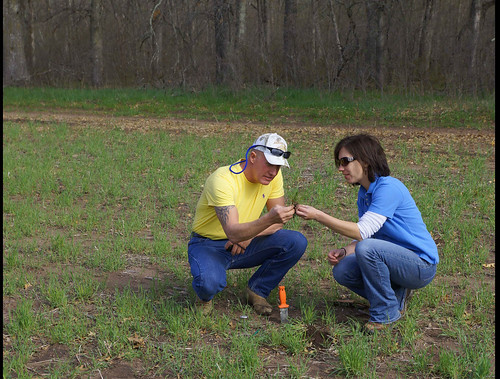
To Chisago County, Minn. farmer Keith Johnson, triathlons, swimming in clean water and conservation have a lot in common. They’re his passions, and he’s in constant pursuit of information on these topics.
Years ago, when printed publications and brochures were the norm, Johnson would find himself taking any piece of information he could get his hands on. Life-long learning was something he took a great deal of pride in.
Johnson relates his love for “information gathering” to that of a “treasure hunt.” Over the years, since Johnson started farming, he found that he simply couldn’t learn enough. With the advent of the Internet, smartphones and social media, his game of the “treasure hunt” has adapted.
Now in a matter of seconds, he can find what he needs from a phone or computer. And, on top of that, social media allows him to watch for the latest information, whether it’s an upcoming competition, environmental stewardship or the latest in conservation.
“Social media is driving Keith’s thirst for information as he goes about his quest for clean water,” said Deb Hermel, a district conservationist with USDA’s Natural Resources Conservation Service (NRCS) who worked with Johnson. “With the passion Johnson has for clean water, he is reminded when he swims triathlons that through soil and water conservation, it is probable he will meet his goals and vision for cleaner water for all.”
Conservation is important to Johnson, who has an 85-acre ranch where he raises cattle. He works so that his ranch only sends clean water downstream.

A few years ago, Johnson learned about the Conservation Stewardship Program offered by NRCS. Prior to signing up for CSP, Johnson relied upon online information for research, including social media.
For Johnson, he found connecting to social media essential. Because of his non-farm background, he relies on ways in which he can learn on a continual basis.
As part of this program, Johnson tests the grasses on his pastures to see what nutrients they need. He learned how to test them – called leaf tissue testing – from a YouTube video.
A few months ago, a post from NRCS Minnesota (@NRCS_MN) that announced funding for improving pollinator health intrigued Johnson. Just minutes after seeing the post while eating breakfast at his farm, he called Hermel to learn more. As a result of the discussions, he created two apiaries.
He also uses Twitter to share the happenings of his farm, such as checking on his bees or working in the field. Many are branded with appropriate hashtags.
“Everyone has a different perspective, but with social media I am able to share my experience with others in the matter of a few seconds,” Johnson said. “This has led to connections of people from throughout the world.”




